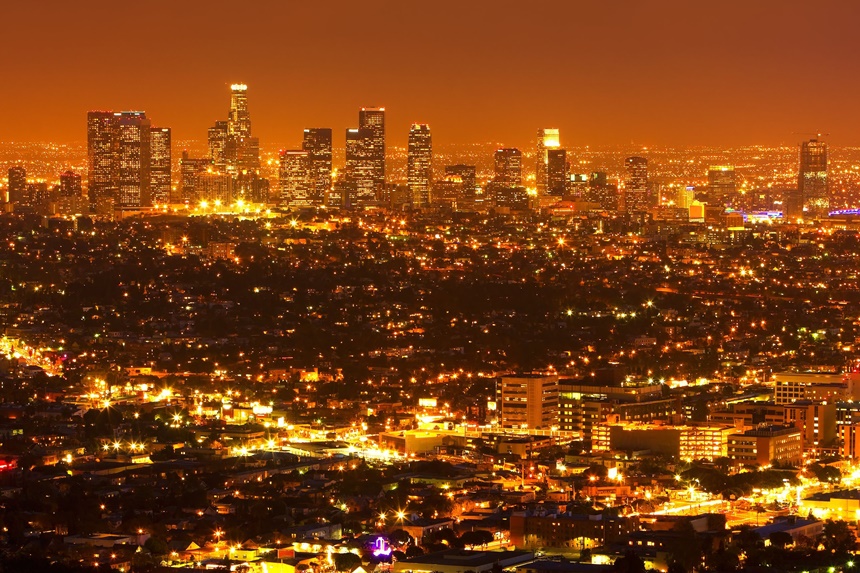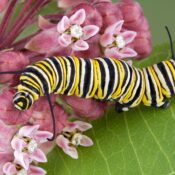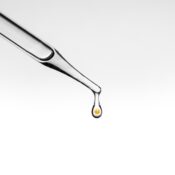There’s solid evidence ALAN kills large numbers of animals at night for no good reason, and causes or contributes to human health issues like dementia and depression. We need to locate this fellow and put a stop to his bad behavior.
The trouble is that ALAN, or artificial light at night, is handy when it’s dark out. Leaving for work at 4 a.m. without headlights is tricky, and night-shift workers can’t get much done in a darkened factory.
Another term for ALAN is light pollution, which is hard to take seriously, as it’s the only kind of pollution that disappears with the flip of a switch. If your yard is flooded with mercury, it stays toxic for thousands of years. But if it’s flooded with light, simply cut the power and it goes away.
The thing is that when we illuminate the dark for work, play, or safety, light tends to zoom off to all kinds of places other than where we need it. For glaring evidence of just how severe light pollution is globally, check out the World Atlas of Night-Sky Brightness. They say it’s better to light one candle than to curse the darkness, but taking this concept too far can harm many species of wildlife that are active at night.
Florida’s roughly 2,000-mile coastline is a key nesting ground for loggerhead, green, and leatherback sea turtles. The nocturnal hatchlings are drawn to brightly lit commercial zones where they perish annually by the thousands. Experts think a sharp rise in sea turtle nest numbers since 2020 is due to a near-absence of tourists during the pandemic that resulted in a drop in beachfront lighting.
When frogs are lit-up at night, they become too shy to call for mates. And since they don’t get lucky as often, their reproductive success drops. Artificial light near bat roosts keeps bats from feeding normally, contributing to their decline.
Migratory birds take it on the beak especially hard. Nearly all non-resident songbirds migrate at night, and while bird navigation is complex, light from celestial bodies is believed to help them steer. Unfortunately, ALAN throws a wrench in the works, and every year in the U.S., up to a billion songbirds die when they crash into lighted buildings.
In terms of numbers, flying insects are the most heavily impacted by ALAN. The ongoing “bug-pocalypse” may not bug us as deeply as dead sea-turtle babies do, but insects that pollinate food crops have disappeared at an alarming rate in recent decades. Factors include pesticides and climate change, but research shows outdoor lighting plays a big part.
Ironically, fireflies have taken a huge hit due to artificial light, which obliges them to use energy making brighter flashes. A 30-year study published in October, 2023 details a precipitous drop in firefly numbers in Brazil over that period as unfettered sprawl brought light to new areas.
Exposure to ALAN is bad for us, too, upsetting our circadian rhythm and wrecking sleep architecture. Poor-quality sleep may sound like a big yawn, but it increases our risk for diabetes, heart disease, and other conditions. Scientists think unhealthy sleep patterns disrupt cancer-suppressing genes, leading to breast, prostate, gastric, and lung cancers.
ALAN suppresses melatonin, which in addition to regulating sleep cycles, helps our endocrine system function. A 2023 study details a strong correlation between light pollution and Alzheimer’s disease. Research also suggest that infants exposed to ALAN are more likely to develop depression and other mood disorders later in life.
Modern innovations have made things worse: light-emitting diode (LED) lights, which last longer than incandescent bulbs and use a fraction of the energy, are better for the environment and our wallets. Yet LEDs are five times more powerful at disrupting sleep rhythms than old-fashioned bulbs, resulting in daytime sleepiness, impaired performance, and obesity. Another issue is that our eyes’ photoreceptors are more sensitive to blue light, the kind LEDs and electronic displays create in abundance.
Fortunately, there are lots of ways to limit ALAN’s negative impacts while still enjoying its benefits. Here’s how we can enjoy ALAN while keeping his bad habits in check.
In terms of animal impacts, every light matters; home and skyscraper alike. When lighted-widow area is cut 50 percent, bird mortality drops tenfold. The National Audubon Society has a “Lights Out” project to encourage people to turn lights off after 11 p.m. during migrations. If you’re a curious night-owl, the Cornell Lab of Ornithology hosts a real-time map of bird migration so you can see exactly when to go dark.
You don’t have to black-out your home, indoors and out, to save wildlife. Extinguish lights in rooms you’re not using, and close the blinds in the room you’re in. It’ll save you money and increase your privacy.
Use motion-sensor outdoor lights rather than ones that stay on all night, and shield fixtures to shine only on areas that need illumination. If you use LEDs, be aware a 10-watt LED bulb is equivalent to a 100-watt incandescent, so it’s easy to end up with a product many times brighter than you need.
Indoors, the American Medical Association recommends limiting time near computers and TVs at night. Even a blue-LED clock display in your room can affect sleep. You might wonder how this happens when your eyes are closed. It turns out 0.3 percent of blue light gets through our eyelids, and our eyes can detect even a single photon. Numerous apps are available to change your electronic screens to “warmer” (less-blue) light at night.
With a few guidelines, ALAN makes a pretty good friend after all.
Become a Saturday Evening Post member and enjoy unlimited access. Subscribe now




Comments
Folks, the solution to light pollution is quite simple. Move to a rural country area. We have few lights here unless someone is up to no good.
Thanks for the info here. There’s too much unnatural light that’s way too strong (LED) and isn’t necessary. Also, Americans scoff at sleep even if they say it’s important, because they know that’s what they’re “supposed to say.” It’s key in staying well. I was out waaay too late last night with some friends that moved out of state, visiting L.A. ahead of Thanksgiving. Sleep is extremely important to me.
I can’t stand the ridiculously bright lights on today’s transportation appliances. Driving today is a total bummer aside from the $5+ per gallon of gas, made worse by the lights. I bought a great pair of sunglasses from an ad in the Post I do wear at night. I do love neon lights though, especially in Tokyo; they’re gorgeous and mesmerizing.
The negative impact ALAN poses on circadian rhythms, disrupting cancer-suppressing genes, frogs, songbirds and so much more tells me these lights ideally would/should be legislated depending on where they’re doing the most damage. Dead sea turtles are alarming enough. Not just for them, but the role they play in the chain of the proper sea life eco-balance otherwise.